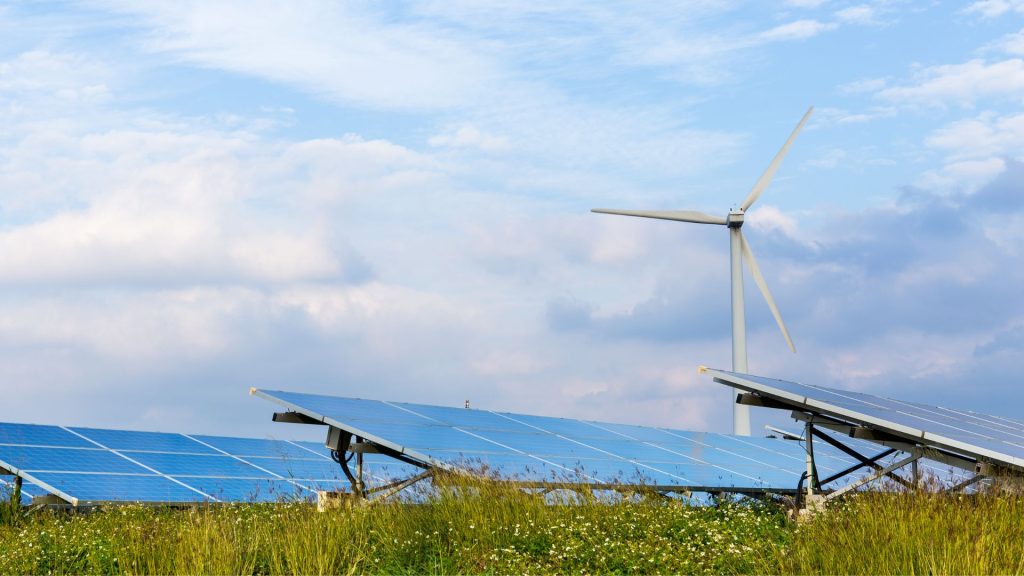To achieve net-zero carbon emissions by 2050, Wisconsin must harness the power of clean energy. We need to build 31 gigawatts (GW) of solar and 21 GW of wind energy projects by the middle of the century to reach net-zero. Right now, we’re less than 4% of the way to our target. Fortunately, we’re seeing some significant movement in plans for wind and solar projects in Wisconsin. Here’s what’s happening:
The Vista Sands Solar Farm is a large solar project planned in the heart of the Central Sands region in Portage County. This 1.2 GW project would be the largest solar development in Wisconsin, about four times the size of the Koshkonong Solar Energy Center approved in Dane County last year. It would be the biggest step yet on the path to net-zero in Wisconsin. A primary reason Clean Wisconsin supports solar projects is because they transition our electricity from polluting fossil fuels to clean energy, mitigating climate change and reducing dangerous air pollution. But there are many other benefits that come from converting certain existing land uses to solar. For Vista Sands, benefits to local waters could prove especially significant because of the sandy soil characteristics of the area. We expect there is good potential to improve water – perhaps both quality and quantity – in the project area by shifting some land in and around the solar panels into perennial cover and pollinator habitat.
Click here to learn more about Vista Sands and the project benefits.
Another notable upcoming project is Uplands Wind, a 600-megawatt (MW) wind energy project in Lafayette and Iowa Counties in Southwestern Wisconsin. While many of us think of the windy Dakotas or offshore locations as the windiest spots, there are plenty of areas here in Wisconsin that have sufficient wind resources to develop homegrown, inexpensive wind energy. After a slowdown of applications in the last decade, it’s exciting to see wind projects returning to our state. Wind energy is highly compatible with existing agricultural land uses and can bring a steady new income source to family farms and rural communities.
Communities have lots to gain
In addition to mitigating climate and air pollution, solar and wind energy projects carry many other benefits including significant boosts for local economies. Landowners who sign leases to host solar panels or wind turbines on their properties receive reliable, long-term income that helps keep family farms in business. But the economic benefits don’t stop with families who sign leases, the whole community benefits. State law requires the companies who own these projects to essentially write an annual blank check to host communities. Every year, owners of large solar and wind farms pay $4,000 per MW into a utility aid fund that is shared with the hosting local governments. For a project the size of Vista Sands, that would amount to $4.8 million every year; for Uplands, it would be $2.4 million annually. At a time when our rural schools and public services struggle with inadequate budgets, just think about what we could do with an annual blank check that size. It helps our state economy too, because instead of sending $14 billion dollars out of state every year to import fossil fuels, we could be producing our own energy in Wisconsin. Keeping those billions of dollars in Wisconsin will help our local communities grow and thrive.
With both projects, as always, Clean Wisconsin will let the science guide us, and we’ll be advocating for the best outcomes for our climate, local environment, and host communities. We hope you’ll join us in supporting these and other clean energy projects, especially if you live in nearby communities.
Visit cleanwisconsin.org/action to join our Action Network and get involved.

